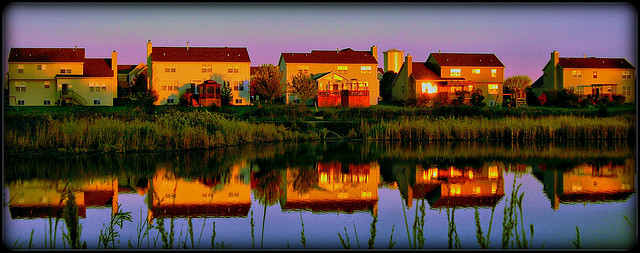Living on the water front in Orlando is peaceful and tranquil. No one can argue with that, but you must protect it. How? By thinking through these top five issues with water front property and by doing so preventing the disruption of your peace and tranquility.
-
Community Waterfront versus Private Waterfront.
Many waterfront and water access properties are located in developments where the original developer subdivided a large tract and reserved the waterfront for the use of all of the houses in the neighborhood. Homes in the interior of the development may be listed as “water access” properties and have affirmative rights to community beaches, boat ramps and other facilities. In many of these developments, there is also a strip of land that lies along the water and surrounds the entire community and was intended to allow for members of the community to walk and have access to the entire waterfront. The ownership structure of these walks can vary widely, but if they are present, there are special concerns for the homes nearest the water. Those homes may have the right to build and maintain a pier — but the pier may actually be owned by the community and be available for all of the members to use. Or there may be no right to a pier at all. The possible variations are too many to list, but an owner purchasing in a community like this should be certain to understand exactly what the obligations and benefits are.
-
Waterfront versus Waterview.
A true “waterfront” property is one that has waterfront rights associated with it. Such rights would include the right to apply to construct a pier or other waterfront improvement. Or the first right to apply for permits for waterfowl hunting, and the right to prevent others from impeding access to the water or the view of the water. In contrast, a “waterview” property is generally one that is close to the water, but has land owned by someone else between the land and the shoreline. A waterview may have a limited right to build a pier or no right at all and may not have any guarantee that another owner will not build a fence, structure or put in plantings that obstruct the waterview. Careful consideration should be paid to what might be placed between the waterview property and the water.
-
Pier Locations, Boundary Lines and Permits.
Having or keeping a pier is a first thought and most important thought for many waterfront lots. It is not relaxing and fun to have a dispute with a neighbor about whether a pier is on his property, your property, on the line, should be shared, or whether a pier that you were counting on using is even legal. If you are thinking about a home where there is currently a pier or where you would like to put in a pier, its continued viability should be investigated. Find out about its zoning, its legality and if their could be any disputes with neighbors.
-
The Obligation and Ability to Maintain the Waterfront.
There are always erosion concerns for properties on bluffs or with a lot of wave action. For all waterfront properties, there are significant legal restrictions on the owners’ ability to clear growth and trees, to fill eroded areas, and to construct shoreline protection. The cost and ability to obtain permits for waterfront repairs and maintenance should be examined.
-
Choose the right professionals.
The reason people purchase waterfront is to improve quality of life, and doing so is usually successful. There will always be an unfortunate few that end up purchasing a large, unexpected and expensive dispute, and their quality of life is definitely not improved. Without question, the best means of avoiding unexpected difficulties is to communicate with professionals with experience and interest in waterfront properties.
Image by Chris Bartnik Flickr

